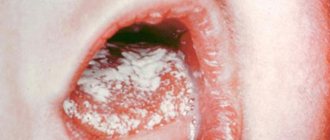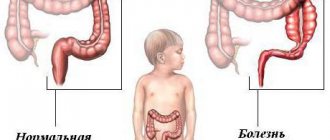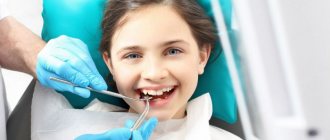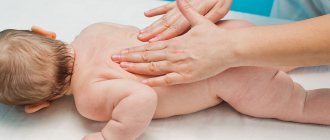Why does facial asymmetry occur?
Physiological conditions
Slight static (visible at rest) facial asymmetry is a physiological norm and occurs in almost all people.
A difference in proportions within 3-5 degrees or 2-3 mm is considered normal. Sometimes visually noticeable differences between the halves of the face are aggravated by facial features. This asymmetry (noticeable during tension of the facial muscles) is called dynamic. The differences tend to worsen with age as a person repeatedly tenses the same muscles asymmetrically. This affects the condition of soft tissues and the formation of wrinkles.
Damage to cerebral structures and meninges
Facial asymmetry is provoked by traumatic injuries and diseases of the central nervous system of various origins. The list of pathologies includes:
- Compression of the brain.
Acutely develops as a result of severe head injury, cerebral edema. Gradually progresses with hydrocephalus, tumors, cystic formations located in the cranial cavity. - Stroke.
Occurs acutely against the background of arterial hypertension, atherosclerosis, angina pectoris. May be ischemic or hemorrhagic. The outcome of both variants of pathology is focal brain damage, causing disturbances in nervous regulation and facial asymmetry. - Encephalitis.
Focal disorders are a consequence not only of circulatory disorders, but also of inflammatory processes in the brain. Facial asymmetry is sometimes observed in patients who have had primary (tick-borne, Japanese mosquito) or secondary (influenza, measles, post-vaccination) forms of encephalitis. - Meningitis.
The cause of symmetry disorder can be the involvement of cranial nerves, the spread of infection to brain structures with the development of meningoencephalitis. The symptom is more often detected with purulent meningitis, basilar tuberculous meningitis. - Neuroleukemia.
Formed as a complication of leukemia. Facial asymmetry can be caused by dysfunction of the cranial nerves, the occurrence of leukemic meningoencephalitis, and compression of brain structures in patients with the pseudotumor form of the disease. - Progressive hemiatrophy of the face.
The gradual reduction of half the face is due to atrophy of bones and soft tissues, presumably caused by an effect on the autonomic centers. Changes appear in a limited area and eventually spread to the entire half of the face. - Oromandibular dystonia.
It is manifested by violent movements: clenching, lateral movements of the jaws, opening and closing the mouth, which are accompanied by curvature of the lips, violation of symmetry at the level of the cheeks. The occurrence of pathology is provoked by damage to the basal ganglia.
Facial asymmetry
Pathologies of cranial nerves
The most common cranial nerve disorder causing asymmetry is facial neuritis. The cause of violation of symmetry is paresis or paralysis of facial muscles. The typical clinical picture includes smoothness of the nasolabial fold, drooping of the corner of the mouth, inability to close the eyelid, and skewing of the face in the healthy direction. A type of facial paralysis is Ramsay-Hunt syndrome. Along with weakness of facial muscles, patients experience ear pain, dizziness, and hearing loss.
In patients with Bogorad syndrome, branches of the facial or abducens nerve grow into the salivary and lacrimal glands. The disease develops at an early age, less often becomes a consequence of injuries in adults, and is accompanied by lacrimation and increased salivation on the affected side. Damage to the facial nerve is manifested by paresis of the facial muscles, the abducens nerve - hearing impairment, deformation of the auricle. In children, facial asymmetry progresses as they grow.
Jaw lesions
A fairly common dental cause of facial asymmetry are diseases, consequences of injuries, congenital anomalies of the jaws and TMJ:
- Arthrosis of the TMJ.
The symptom appears during the process of opening the mouth and is caused by a displacement of the lower jaw to the affected side. The disease develops gradually, accompanied by crunching, clicking, morning stiffness, and dull pain. - Ankylosis of the TMJ.
Facial asymmetry persists at rest and gets worse when trying to open the mouth. The midline of the face is shifted to the affected side. The lower jaw is retracted downwards by no more than 1 cm, horizontal movements are impossible. - Contracture of the lower jaw.
There are restrictions when opening the mouth, a decrease in the amplitude of movements of the lower jaw. The midline also shifts towards the affected side. The pathology can be unstable (inflammatory) or persistent (scarring). - Ameloblastoma.
An odontogenic benign tumor that destroys jaw tissue can reach significant sizes and cause significant facial deformation. The tumor grows slowly, and asymmetry in the jaw area becomes the first symptom of the disease. - Other benign tumors of the jaws
. The symptom is often found in osteomas, osteoid osteomas, and osteoblastoclastomas. - Cancer of the upper jaw.
Deformation occurs when the size of the neoplasia is sufficiently large and is caused by the growth of the tumor itself, the destruction of nearby anatomical structures, and inflammatory edema. - Cancer of the lower jaw.
Facial asymmetry is noted in the case of tumor growth into nearby soft tissues and deformation of the alveolar process.
Another reason for asymmetry is jaw defects, which can be congenital or acquired: resulting from injuries, osteomyelitis, tuberculosis, syphilis, and operations for cancer. In case of a defect of the upper jaw, the symptom appears due to the recession of the cheek, and may be accompanied by the formation of oronasal and oroantal anastomosis.
A defect of the lower jaw is characterized by a violation of the oval of the face. Due to the displacement of the jaw towards the midline, the asymmetry is aggravated during mouth opening. Violation of symmetry is also often manifested by micrognathia - a reduction in the jaw due to underdevelopment or previous damage. With upper micrognathia, the lower teeth overlap the upper ones (reverse overlap); with the lower variant of the pathology, a slanted chin is observed.
Diseases of the salivary glands
Inflammatory processes and space-occupying formations of the salivary gland cause deformation of the lower outer part of the face and cause asymmetry.
- Purulent parotitis.
A rapidly increasing painful swelling appears in the projection of the parotid salivary gland. An increase in temperature and symptoms of intoxication are detected. - Mucocele.
Causes facial asymmetry as a result of damage to the salivary glands located in the parotid and submandibular regions. The swelling is painless, the condition is satisfactory, there are no signs of inflammation. - Cyst.
As in the previous case, the symptom is observed when the parotid and submandibular glands are involved; pain and inflammatory manifestations are not observed. Due to infection, low-grade fever and local soreness are possible. - Adenoma.
Benign tumor with slow growth. As the size increases, along with asymmetry, discomfort and decreased salivation are noted. - Tumors.
Benign lipomas, neuromas, and angiomas form in the area of the salivary glands. Clinical manifestations of the neoplasm resemble an adenoma. The list of malignant neoplasias includes sarcomas and carcinomas, which are characterized by rapid growth and destruction of soft tissue. Pathologies are often accompanied by paresis of the facial nerve.
Other dental diseases
Other inflammatory dental pathologies that can cause facial asymmetry include:
- Periostitis of the jaw (flux).
Only the periosteum suffers, the jaw itself remains intact. Flux is often caused by dental diseases. The cause of asymmetry is local edema, the formation of an abscess under the periosteum. - Periapical abscess.
An abscess forms in the tissues around the root of the tooth, provoked by acute periodontitis. It manifests itself as severe throbbing pain in the area of the affected tooth. Facial deformity is caused by the spread of edema to the surrounding soft tissues. - Perimaxillary abscess.
Develops with dental lesions and inflammatory processes in surrounding tissues. Accompanied by a violation of the general condition, toothache, dense swelling, in the center of which a fluctuation area subsequently forms.
Non-inflammatory causes of asymmetry include crossbite, a condition in which the dentition intersects when the jaws close. May be congenital or acquired. It is characterized by a shift of the chin to the side, recession of the lip on one side, and flattening of the lower parts of the face on the other.
Facial injuries
Temporary asymmetry of the face, caused by swelling of the soft tissues, is observed with soft tissue bruises and facial hematomas. It occurs after a blow or fall, increases rapidly within a few hours, and gradually disappears over 1-2 weeks. At the recovery stage, there is a consistent change in skin color in areas of hemorrhage. In fractures, asymmetry is caused not only by swelling, but also by displacement of the hard structures of the facial skull. The cause of the symptom is:
- Fracture of the lower jaw.
The loss of symmetry is more noticeable along the outer or lower edge of the cheek. A step (discontinuity of the dentition) in the area of the fracture is detected in the oral cavity. - Fracture of the upper jaw.
The face becomes asymmetrical due to swelling in the upper part of the cheek. Hemorrhages in the periorbital area and neurological disorders are possible. - Fracture of the zygomatic bone.
Initially, the swelling is localized in the cheekbone area, and subsequently quickly spreads upward and downward along the outer surface of the face. Periorbital hemorrhages and double vision may be observed.
ENT diseases
Silent sinus syndrome occurs as a result of atelectasis of the maxillary sinus. It manifests itself as a decrease in the volume of the accessory sinus, unilateral deformation of the face: drooping of the lower edge of the orbit, displacement of the eyeball into the orbit, and recession of the cheek. The pathology develops over many years, gradually progresses, and in the final stages is accompanied by ophthalmological disorders.
In patients with cysts of the paranasal sinuses, in contrast to the previous case, asymmetry develops due to excess, and not due to lack of tissue. The symptom is detected only with large cysts and is manifested by unilateral deformation of the forehead or cheek. Pain in the sinus area, dull headaches, and recurrent sinusitis are observed.
Congenital and childhood pathologies
Facial asymmetry is diagnosed in the following congenital diseases and pathologies of childhood:
- Sturge-Weber syndrome.
A congenital disease in which angiomas form on the skin and meninges. With hydrocephalus and hemiparesis, facial asymmetry develops on the side opposite to the location of the angiomas. - Torticollis.
The congenital form is caused by underdevelopment of the sternocleidomastoid or trapezius muscle, while the acquired form is caused by various diseases and injuries. The child's ear, eyebrow and eye on the affected side are lower than on the healthy side. The palpebral fissure is somewhat narrowed. - Lhermitte-Duclos disease.
A genetically determined pathology, the main manifestation of which is a neoplasm of the cerebellum. Even before the tumor begins to grow, the disease can be suspected by asymmetry of the facial skeleton, gum hyperplasia, congenital anomalies of the hands, and some other signs. - Acute intermittent porphyria.
A hereditary disease manifested by attacks caused by disorders of porphyrin metabolism. Facial asymmetry is observed in severe cases, occurs approximately a week after the onset of gastrointestinal symptoms, and is combined with other neurological disorders. - Cleft lip.
A developmental anomaly in which one or two clefts of the upper lip are detected, located on either side of the midline. With an accompanying cleft palate, the deformity is aggravated by a “dip” in the middle part of the face and a violation of the shape of the nose. - Stigmas of embryogenesis.
Violation of symmetry can be determined by a number of small anomalies: changes in the shape of the skull, deformations of the nose, eyes, and dental system.
Other reasons
Other possible causes of facial asymmetry include:
- Hydrogen peroxide poisoning.
The symptom is detected when there is a violation of cerebral circulation, complemented by disturbances in speech, hearing, and coordination of movements. - Actinomycosis.
Asymmetry is observed in maxillofacial actinomycosis and is caused by the formation of an infiltrate in the area of the masticatory muscles and the development of trismus. - Kallmann syndrome.
With this form of hypogonadism, the symptom is caused by developmental defects and minor anomalies of the face, and is combined with eunuchoidism, cardiovascular disorders, and gynecomastia. - Botulism.
Accompanied by facial asymmetry in neurological disorders that cause paresis or paralysis of facial muscles.
How does asymmetry manifest itself?
Based on the fact that there are two forms of the defect - natural and pathological, it is possible to determine whether a child has asymmetry thanks to the following factors.
Regarding asymmetry, the left and right sides of the face are not noticeably different from each other. This case is characterized by the following changes: the right side looks wider, the facial features are quite sharp.
The left half looks a little smaller, the features are smoothed out and soft. The difference does not reach 3 millimeters. If the defect takes on a pathological form, the signs become much more noticeable.
In such cases, the disease has the following symptoms:
- The facial muscles of the area affected by the defect lose their tone, weaken, and lose elasticity. It seems as if a mask was put on one half of the face.
- The folds on the forehead and in the area of the nasolabial triangle become softer, in some cases completely smoothed out.
- The eye shape becomes larger.
- The child always looks sad, which is noticeable by the downturned corners of his mouth.
- The half of the face affected by the defect cannot display basic facial movements: completely close an eye, smile, wrinkle your forehead.
- The child has difficulty speaking and eating.
- Sometimes sharp pain may occur in the area of the pinched nerve.
Diagnostics
Determining the cause of facial asymmetry is most often carried out by dentists or neurologists. If appropriate symptoms are detected, the patient is referred to otolaryngologists, oncologists, endocrinologists, and other specialists. The examination plan may include the following diagnostic procedures:
- Questioning, physical examination
. The doctor establishes the time and circumstances of the onset of the symptom and asks the patient about other manifestations of the disease. Evaluates the severity of asymmetry at rest, during facial and chewing movements. Detects other changes: swelling, redness, blanching, increased local temperature, tumor formations. - Dental examination.
Includes studying the condition of teeth, gums, hard and soft palates, mucous membranes of other areas, and bones of the facial skeleton. Allows you to confirm the presence of diseased teeth, inflammation, injury, suppuration, tumors. - Neurological examination.
The specialist studies the innervation of the facial muscles, asking the patient to perform certain movements: wrinkle his forehead, raise and lower his eyebrows, puff out his cheeks, show his tongue, bare his teeth, follow the movements of the neurological hammer with his eyes. The neurologist then palpates the available nerve exit points. - Otorhinolaryngological examination.
Provides for special research. If pathology of the paranasal sinuses is suspected, echosinusoscopy or diagnostic puncture can be performed. In case of complaints of hearing impairment, audiometry, tuning fork examination, etc. are performed. For vestibular disorders, vestibulometry and rotational tests are recommended. - Radiography
. Taking into account the identified pathological changes, the patient is prescribed an X-ray of the tooth, an X-ray examination of the jaw or paranasal sinuses. In some cases, radiographs of the skull and cervical spine are necessary. - Ultrasonography
. During the examination, sonography of the salivary glands, paranasal sinuses, and soft tissues may be performed. If signs of brain compression are detected, echoencephalography is indicated. - Other visualization techniques
. Most often, CT or MRI are used to clarify the diagnosis and to study in detail the nature of the changes, the volume and location of the pathological focus. For neurological pathology, PET-CT and SPECT of the brain may be prescribed. - Lab tests
. A general blood test determines the presence and severity of inflammation; the results of a microbiological study determine the pathogen and its sensitivity to antibiotics. In case of space-occupying formations, histological and cytological examination of smears, punctures, and biopsy specimens is carried out.
Elimination of facial asymmetry
Making a diagnosis
If we are talking about a pathological form of the defect, it is quite simple to determine its occurrence.
To correctly diagnose and prescribe treatment, a specialist examines the child, talks with parents, studies the medical record and performs measuring procedures that help identify facial disproportion.
In the modern medical system, there are some methods that are used to diagnose asymmetry in children, these include:
- Complete examination by a dentist, ophthalmologist and neurologist.
- Study of the neurological system using special devices.
- Ultrasound diagnostics of the skull.
Such measures are carried out if the cause of the defect is damage to the facial nerve.
Treatment
The etiology of facial asymmetry is very diverse. Many diseases accompanied by this symptom can pose a serious threat to the patient’s health, especially if treatment is started late. Self-medication in such cases is unacceptable; the appearance of this symptom should be considered as a reason to immediately seek medical help.
Conservative therapy
The treatment plan varies depending on the characteristics of the pathology. In many cases, a special diet is recommended. For dental diseases, treatment of caries, pulpitis, and periodontitis can be carried out. Patients with facial asymmetry are prescribed medications of the following groups:
- Analgesics
. Indicated for severe pain syndrome. Intramuscular injections or tablet forms are possible. - NSAIDs
. Required to reduce the severity of inflammation, swelling, and pain. General action drugs are taken in short courses to reduce the risk of side effects from the liver and gastrointestinal tract. - Antibiotics
. Necessary for general bacterial infections and local inflammatory processes. First, broad-spectrum drugs are used; after receiving the results of microbiological analysis, the antibiotic treatment regimen is adjusted taking into account the sensitivity of the pathogen. - Antiseptics
. Local medications are used in the form of rinses. Recommended in the presence of inflammation, wounds on the mucous membrane, after surgery.
In some cases, drug therapy is supplemented with physical therapy. When treating diseases that cause facial asymmetry, electrical stimulation, UHF, medicinal electrophoresis, and other methods may be prescribed. For oncological pathologies, chemotherapy and radiation therapy are performed.
Pinched facial nerve in a child - what to do
It should be noted that the main cause of the defect is neurological diseases. This is especially true for facial neuropathy.
This disproportion has a number of distinctive features. Among them:
- At first, the child may complain of pain behind the ear.
- After a couple of days, there is a drooping of the corner of the mouth, the face skews to one side. The baby cannot smile or frown.
- The child may completely or partially lose the taste of foods.
- Characterized by abundant production of tears or, conversely, dry eye sockets.
- After some time, the child begins to develop trigeminal neuropathy. Subsequently, the face may become completely paralyzed, and the muscles may contract chaotically.
In order to understand whether this defect can be corrected, we recommend watching a video on the topic “Facial neuritis in children.”
Dangerous consequences of asymmetry in a child
As with any other disease, delaying a visit to the doctor can lead to serious consequences, threatening the child’s health. For example, chaotic contraction of facial muscles may begin, and facial myoclonus develops.
It will be extremely difficult to get rid of such complications. In addition, the baby will feel emotional discomfort, since the aesthetic appearance will suffer. This is fraught with prolonged depression, nervous disorders and mental problems.








